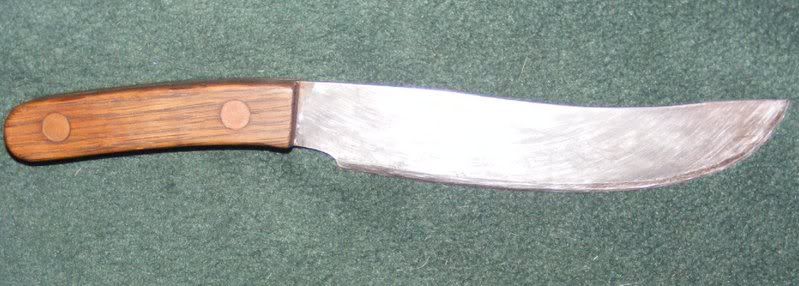I recently picked up a box of junk files and naturally, the first thought that came to me was that they might make good knives.
I took the temper out out of one of them by heating it till it was a dull red, then let it cool. It can now be cut fairly easily with a file.
I have never made a knife of any kind, and so I am not sure where to go from here.
I have a couple of questions to start, and will probably have more as I progress.
1. Since the shape is already pretty much there, do I need to heat and hammer or should I do the final shaping with files? I would think files would be the best way to go, but I don't really know.
2. The file I started with is relatively small, and as I look at it I am thinking I might need to lengthen the tang. What would be the best way to go about doing this, or should I just throw it in the scrap box and start with a longer one?
Any suggestions would be greatly appreciated.
Thanks
I took the temper out out of one of them by heating it till it was a dull red, then let it cool. It can now be cut fairly easily with a file.
I have never made a knife of any kind, and so I am not sure where to go from here.
I have a couple of questions to start, and will probably have more as I progress.
1. Since the shape is already pretty much there, do I need to heat and hammer or should I do the final shaping with files? I would think files would be the best way to go, but I don't really know.
2. The file I started with is relatively small, and as I look at it I am thinking I might need to lengthen the tang. What would be the best way to go about doing this, or should I just throw it in the scrap box and start with a longer one?
Any suggestions would be greatly appreciated.
Thanks






